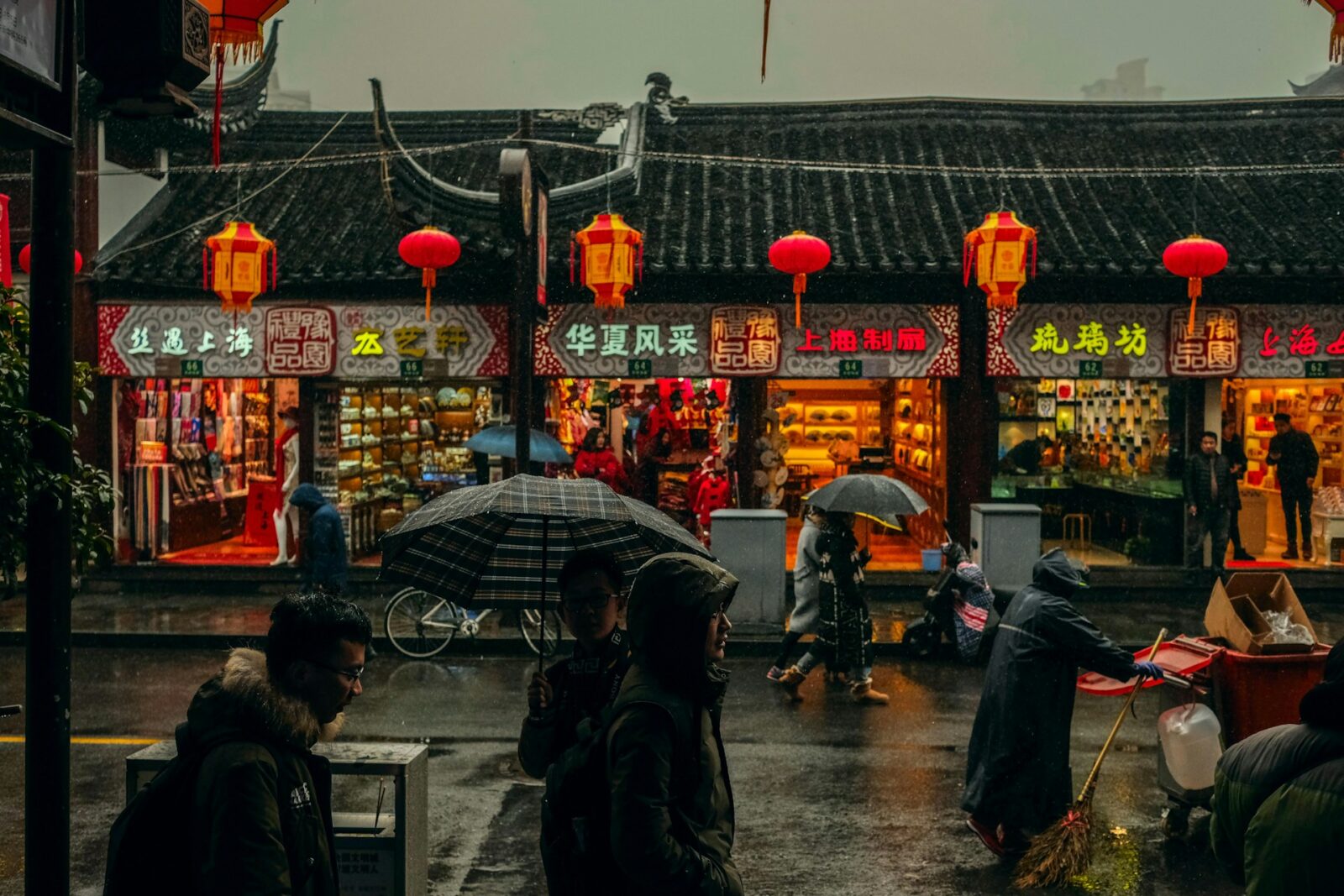A Paradox of Prosperity in China’s Growth Story
The China economy slowdown is revealing a growing paradox — booming exports on one hand, but faltering domestic momentum on the other. While shipments abroad reached record highs this year, underlying weaknesses in investment, industrial output, and consumer spending have left the world’s second-largest economy struggling to sustain its post-pandemic recovery.
According to Bloomberg’s survey, China’s GDP likely grew just 4.7% in the third quarter, marking the slowest pace in a year and down from 5.2% in the previous quarter. The data, set to be confirmed by the National Bureau of Statistics, underscores the widening gap between external strength and internal fragility.
At the same time, growing U.S.-China trade tensions, a lingering property crisis, and declining foreign investment are pressuring Beijing to rethink its growth model. As China heads into a pivotal Communist Party plenum, all eyes are on how the nation plans to reignite sustainable growth.
Exports Are Booming — But the Domestic Economy Isn’t
China’s export machine has once again proven resilient. The goods trade surplus hit a record $875 billion so far this year, driven by strong overseas demand for electric vehicles, batteries, and solar technology. Yet, that impressive performance hides domestic cracks.
Retail sales rose just 3% in September, the weakest reading of 2025, while industrial output grew 5%, also the lowest of the year. Meanwhile, fixed-asset investment — a key growth engine for local governments — was flat over the first nine months, reflecting sharp declines in both property and manufacturing investments.
This mismatch highlights the challenge facing policymakers: China can’t rely indefinitely on external demand to compensate for sluggish household consumption and corporate caution. Even as government borrowing accelerates, much of that stimulus is being used to shore up local finances rather than spark broad-based growth.
The Property Sector Continues to Weigh on Growth
The ongoing real estate downturn remains one of the biggest drags on China’s economy. Despite multiple rounds of easing measures, housing investment continues to shrink, eroding confidence among both consumers and developers.
Property developers face a liquidity crunch, with many struggling to refinance debt amid tepid demand. The collapse of major players in previous years still casts a long shadow, making potential buyers wary and local governments hesitant to push aggressive property expansion.
This real estate weakness doesn’t just hurt construction — it ripples across sectors like steel, cement, and household goods, slowing broader industrial output and dampening consumer sentiment.
The International Monetary Fund (IMF) recently warned that China’s economy “remains fragile,” projecting 4.8% growth in 2025, falling to 4.2% in 2026, as the property sector continues to contract.
Foreign Investment Retreats Amid Policy Uncertainty
Another red flag for the China economy slowdown is the sustained decline in foreign direct investment (FDI). Inbound FDI dropped nearly 13% in the first eight months of 2025, marking the third consecutive year of contraction.
Several multinational companies are scaling back investments or shifting operations to alternative manufacturing hubs such as Vietnam, India, and Mexico, citing trade friction, regulatory uncertainty, and geopolitical risks.
While Beijing has rolled out policies to reassure global investors — including the expansion of free trade zones and promises of market access — skepticism remains high. Foreign companies remain cautious about long-term profitability, especially as U.S. trade restrictions on Chinese tech exports tighten.
Government Stimulus Isn’t Delivering the Desired Impact
Beijing has turned to fiscal stimulus and public infrastructure spending in an effort to revive the economy. However, results have been mixed.
While government bond issuance has surged, much of the funding has gone toward local government debt repayments rather than new projects. This means stimulus is plugging financial holes instead of generating fresh growth.
The manufacturing slowdown, combined with weak consumer confidence, has limited the effectiveness of these policies. Without stronger household demand and private-sector investment, China’s growth recovery risks stalling.
The Fourth Plenum: Beijing’s Next Big Move
The upcoming Fourth Plenum of the Communist Party will be a critical juncture for economic policy direction. Scheduled for late October, the meeting will set priorities for 2026–2030, outlining China’s next five-year strategy.
Analysts expect the focus to shift toward rebalancing the economy — moving away from export and investment-heavy growth to a model driven by domestic consumption and innovation.
Chang Shu, Chief Asia Economist at Bloomberg Economics, noted:
“Beijing now faces deep structural headwinds — from fading growth drivers to a prolonged property slump and entrenched deflation. The transition to a consumption-driven economy is no longer optional; it’s imperative.”
This sentiment echoes growing international consensus that China must pivot toward policies that strengthen household income, private enterprise, and financial stability, even if that means slower short-term growth.
IMF and Global Perspectives on China’s Slowdown
The IMF and other global institutions continue to sound cautious tones on China’s outlook. While exports remain a bright spot, both real estate and local debt pressures threaten long-term stability.
In its latest global outlook, the IMF urged China to “rebalance toward household consumption” through increased social spending and targeted fiscal reforms. Such measures would reduce the country’s reliance on industrial subsidies and curb excessive export surpluses — both of which contribute to domestic deflationary pressures.
If Beijing implements these reforms effectively, China could achieve more sustainable and inclusive growth, reducing its dependence on volatile external demand.
Global Ripple Effects: From the U.S. to Europe
The China economy slowdown has global implications. As one of the world’s largest consumers of raw materials and exporter of manufactured goods, any shift in Chinese demand affects commodity markets, supply chains, and inflation trends worldwide.
- In the United States, trade data and inflation figures continue to show the effects of tariff-driven import costs, with the core CPI holding steady around 3.1%.
- Europe, meanwhile, faces its own slowdown, compounded by energy costs and weaker Chinese demand for luxury and industrial goods.
- Emerging markets in Asia are benefiting from partial trade diversification, but their growth remains sensitive to China’s economic performance.
For global investors, the China slowdown signals potential market rebalancing — from commodities to equities — as expectations of lower Chinese growth become the new norm.
The Long-Term Outlook: Can China Overcome Structural Headwinds?
While short-term challenges persist, China retains powerful levers for recovery. Its world-leading manufacturing infrastructure, technological innovation, and massive domestic market provide a strong foundation for future growth.
The government’s push into semiconductors, electric vehicles, renewable energy, and AI could help offset traditional weaknesses in property and heavy industry.
However, true long-term resilience will depend on China’s ability to stimulate private consumption, restore confidence in real estate, and rebuild trust with foreign investors. A successful pivot to consumption-led growth could mark the beginning of China’s next economic era.
The Road Ahead for China’s Economy
The China economy slowdown highlights a nation at an economic crossroads. While exports continue to shine, the structural challenges of weak domestic demand, an aging population, and shrinking private investment present real obstacles to sustained growth.
Beijing’s upcoming policy decisions will determine whether the country can transition smoothly into a new phase of development — one defined by innovation, consumption, and stability, rather than debt-driven expansion.
For now, the world watches closely. China’s ability to navigate its current slowdown will not only shape its future prosperity but also define the trajectory of the global economy in the years ahead.







Leave a Reply